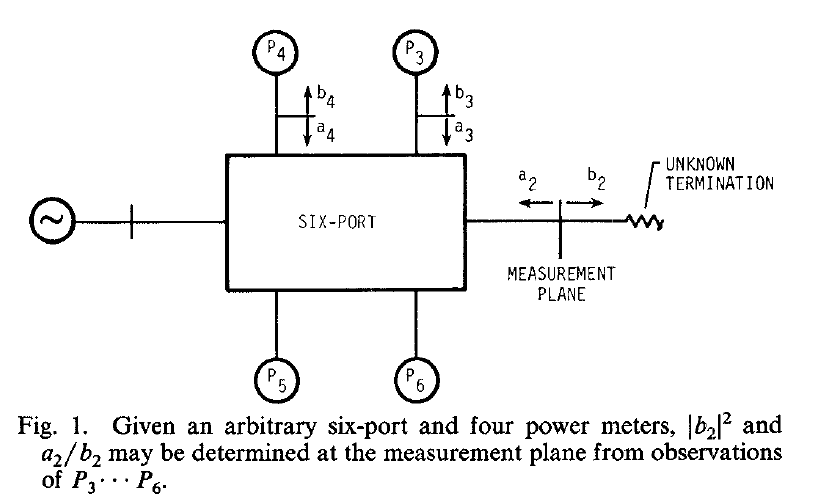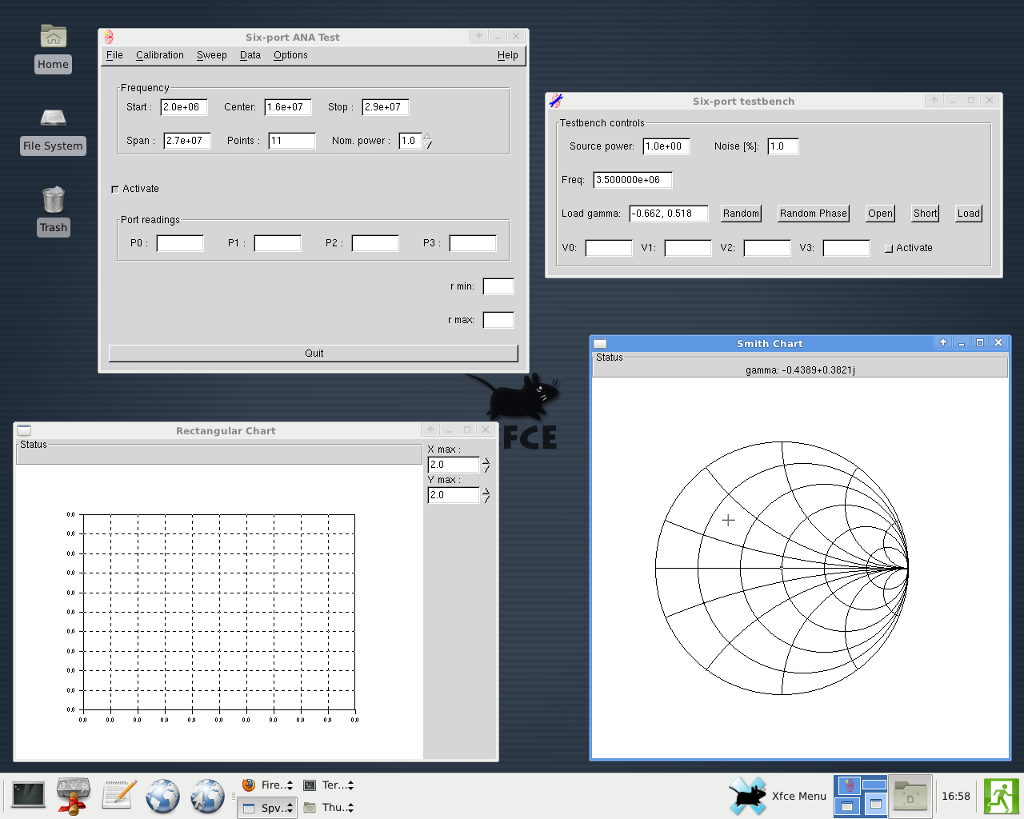IN3OTD's web site
...under perpetual construction.

Six-port Vector Network Analyzer
A six-port vector network analyzer (SPVNA) is a network analyzer that uses only power readings to determine the complex reflection coefficient of a device under test; it was first formally described in [1] and a general overview with a detailed explanation can be found in [2]
In it simplest form, the six port reflectometer, it can determine the reflection coefficient of a one-port device by using just four power readings:
 (drawing from [3], "U.S. Government work not protected by U.S. Copyright.").
(drawing from [3], "U.S. Government work not protected by U.S. Copyright.").
A dedicated page contains a long list of literature regarding various aspects of the six-port technique.
A lot of time ago, around 1999, I started building the hardware and software for a simple six port reflectometer for amateur radio applications, with the goal of accurately measuring impedances (of antennas, mainly) in the HF band (1 MHz to 30 MHz).
After getting the first prototype working, life got in the way and the project was not developed further; recently I found a box with the original hardware, which brought back some memories and prompted me to write this page to describe the six port concept and my implementation.
Here is a snapshot of the SW application I wrote, recompiled since the original executable won't run anymore as it was based on the old Linux libc5...

Under construction...
References: